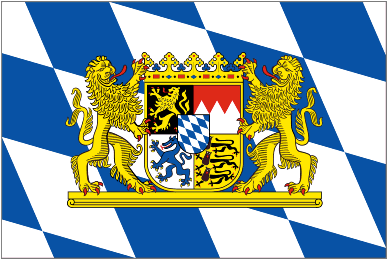Tema: Logotipo de BMW
Al contrario de lo que mucha gente cree y a pesar de los cientos de libros que se han escrito sobre el tema, existe una versión contrapuesta a la de que el logotipo de BMW surgió de la imagen de las aspas de un motor de avión visto de frente, formando 4 cuadrantes según la primer figura. Pero el primer prototipo de motor de avión, salió a la luz en Marzo de 1918, 6 meses más tarde de creado el logotipo de BMW. Bayerische Motoren Werke GmbH se fundó el 21 de Julio de 1917 como sucesora de Rapp Motorenwerke GmbH y su objetivo era construir y comercializar motores –cualquiera sea su tipo– y fabricar artículos relacionados con los productos y su rubro.
Según Wikipedia y otras fuentes, afirman que el logotipo surgió simplemente del logotipo de Rapp Motorenwerke y de un blasón que representara los colores de la bandera de Munich. Como existen leyes estrictas sobre el uso de heráldica, cambiaron el orden de los colores y en vez de utilizar el primer cuadrante con blanco, colocaron el azul. Jörg-Dieter Hübner, portavoz de la compañía, ha confirmado esta información (según Wikipedia).
Publicidad de 1929 enfocada en la oferta de motores para avión
Bandera de Munich con escudo
Logotipo actual de BMW
Luxury Cars and Boats
www.luxurycarsboats.comThere are two traditions concerning the significance of the BMW company logo and trademark, offering two different interpretations of the blue and white fields in the logo.
One interpretation points to a link with a rotating propeller. The other relates to Bavaria as the place where the products are manufactured. A closer look at the available sources and the historical background reveals one account as a myth while the other emerges as a historically plausible explanation. The propeller The significance of the propeller is expressed with poetic flair in an article from BMW's company journal 'BMW Werkzeitschrift' from the year 1942. The author is Wilhelm Farrenkopf, BMW's press and advertising director at the time: 'One of these engineers from the ranks of our skilled aero-engine designers was working on the airfield.
This is the practical testing ground for our big engines, given that an insight into the experience of the pilot is just as important for the development of the aero-engine as valuating the test measurements. He is standing in front of the aircraft ' facing its engine. Full of pride, he contemplates this technical work of art. The propeller shines forth as it rotates in the glare of the sun. The majestic power of the engine with its metal cylinders stands out against the bright blue of the sky, its estimation.
Engineers don't normally allow themselves to get carried away. They're far too firmly focused on their mission. They only see their work, their immediate objective, but on the occasions when they raise their eyes and look up to the blue sky, they still perceive interesting solutions to technical problems. And indeed they wouldn't be real engineers ' and not German researchers ' famous across the world if they didn't expend all their energy seeking to understand the secrets of the world around us. '320 bhp are harnessed within this BMW engine, the first of BMW's aircraft engines, waiting to be unleashed when the aircraft takes off. The shining disc of the rotating propeller surrounds the shadow of the engine that had caught the attention of the engineer.
It radiates like a halo as it splits into two silver cones reflecting the sunlight. The blue from the sky shines between the two cones in such a way that the engineer perceives the glittering surface of the rotating propeller as four areas of colour ' silver and blue.
He is proud of this image and enthused with the thought of a successful future for the engine. In his mind's eye, he also sees the three auspicious letters ' B M W ' reflected in the propeller. This image captures his imagination and he gives it permanent form in a sketch. The company logo is born.
The two silver cones became white fields and combined with the blue cones to create the white and blue centre of the BMW company logo.' Farrenkopf commented with satisfaction that this story outlining the origin of the logo demonstrated the 'logical' manner in which the logo had grown 'organically' out of the products manufactured by the company. However, a number of factual errors slipped into this 'logical' account. The first aero-engine capable of being tested in fact only came onto the test rig in March 1918 ' a good six months after the logo had been created. Furthermore, this first prototype, the BMW IIIa, was designed as an aero-engine delivering 185 horsepower. The first engine to generate 320 hp was the BMW Va, which was manufactured from 1927 onwards. In other words, this engine can't have been the 'first BMW aero-engine'. And when you take a closer look, the idea behind the story simply doesn't work.
For what is depicted is not in fact a BMW product ' the power unit. The way the story is recounted depends on an optical effect caused by the aircraft propeller ' a component of the engine and maintaining our aero-engines'. It was not intended to meet a 'need to advertise our products'. Although the articles in the initial issues dealt with technical matters and provided advice, the magazine was heavily geared to the successes and achievements of prototypes manufactured by BMW, and reports focused on their use in various makes of aircraft.
The aero-engines from the current product range constituted the focus of reporting, notably the prototype BMW VI, which was the most powerful water-cooled unit in the BMW product range. However, even more space was devoted to reports on the aircooled radial engines Hornet and Wasp, which had been manufactured by BMW under licence from the US company Pratt & Whitney since 1928. Despite assertions to the contrary, the content of 'BMW Flugmotoren-Nachrichten' and the weighting of the articles effectively acted as advertising for the aero-engines of BMW AG, in particular for the new air-cooled radial engines in the range. There's no doubt that the range of aero-engines needed to be advertised. The market for aero-engines had collapsed as a result of the global economic crisis.
When the licence from Pratt & Whitney was acquired shortly before, investment of considerable financial resources had significantly expanded the Munich plant, and this was now operating far below capacity (the Annual General Meeting in 1928 authorized an increase in the share capital from 10 million to 16 million reichsmarks specifically for this purpose).
Against this background, the advertising was clearly based on the hope that the innovative air-cooled radial engines of American design would prove superior and provide BMW with a lead in the market for aero-engines in Germany and continental Europe.
The 'propeller interpretation' concerning the origin of the BMW logo was an ideal fit in this advertising campaign. BMW had found a visual image for the theme, and the story itself highlighted the roots and the competence of the company in aero-engine construction. There isn't a shred of evidence for the propeller interpretation' prior to 1929. Earlier reports on the company and its trademark don't mention this story, not even the publications on aeroengines.
We should therefore assume that the 'propeller myth' came into being at the end of the 1920s in order to BMW Group Mobile Tradition: Corporate Affairs Mobile support the marketing measures for the aero-engine product range. Wilhelm Farrenkopf recounted the 'propeller interpretation' in the article in the BMW company journal referred to above, and he elaborated on the theme. He concluded with the sentence:
'A happy coincidence has ensured that this white and blue representation of a propeller in the BMW logo is simultaneously a symbol of its Bavarian origin.'
In fact, it is highly implausible that the choice of the Bavarian national colours for the BMW logo was a coincidence. There are a variety of sources corroborating the idea that the blue and white segments of the BMW logo symbolize the Bavarian national colours. Bayerische Motoren Werke GmbH was founded on 21st July 1917 as the successor company to Rapp Motorenwerke GmbH. When the company was re-founded, the entry in the company register shows that the new company assumed the business purpose of the predecessor company: 'The object of the company is the construction and sale of engines of all types, in particular internal combustion engines for aircraft and automobiles, also the manufacture and sale of all articles from similar or related areas of business and the participation in companies of the same or similar type.
The business of BMW GmbH was initially based on orders for repair and manufacture under licence originating from Rapp Motorenwerke GmbH, for the fledgling air force of the new German Army, or Reichswehr.
However, the information provided in the company register indicates that the intention of the predecessor company and BMW GmbH was to expand the scope of business activities. The public profile of BMW GmbH also provides evidence of this more comprehensive approach. The first extant advertisement published by the company ' its 'birth announcement' ' referred to 'automobile engines', 'agricultural engines' and 'motor boats' as part of the product range alongside 'aero-engines'. However, the first advertisement by Bayerische Motoren Werke GmbH was published without a logo. There was a good reason for this: when the advertisement was placed for publication, there was still no company logo or trademark.
An application was only filed on 5th October 1917 and the entry appears in the imperial register of trademarks on 10th December 1917. The 'Warenzeichenblatt' (trademark bulletin) published by the Imperial Patent Office also recorded the product groups registered for the new trademark. The company was recorded as an 'engine company' and for the following products: 'agricultural vehicles, aircraft, water craft, automobiles, bicycles, automobile and cycle accessories, vehicle accessories, stationary engines powered by solid, liquid and gaseous fuels, and their components and accessories'.
It's quite clear that the newly registered company logo and trademark was directed towards a broadly based product portfolio in the same way as the company itself. The company was not simply intended to specialize in the construction and sale of aero-engines. In view of the circumstances surrounding the registration of the company and logo of BMW GmbH, it is highly improbable that the visual design for the company logo and trademark was based on the aero-engines. Another factor is that this would not have been in accordance with the approach taken by the literature of the time and the sources of today dealing with the design of suitable lettering and emblems for companies and products.
The literature recommended that when lettering and emblems are combined, as in the case of the BMW logo, it was important to provide tangible and transparent links between the constituent elements of the trademark. As far as the BMW logo was concerned, this would have meant establishing a direct link between the textual element 'Bayerische Motoren Werke' and the visual element.
This conclusion raises the issue of the image logic used in designing the BMW logo. As briefly described above, the business purpose and objectives were transferred from Rapp Motorenwerke to Bayerische Motoren Werke when Rapp was renamed in July 1917.The new company also took over the plant and equipment of Rapp Motorenwerke, its assets, liabilities and receivables, as well as the workforce. Bayerische Motoren Werke GmbH therefore perceived itself to be the successor to Rapp Motorenwerke GmbH, and the predecessor company also impacted on its choice of a new name.
Taking the logo of the Rapp Motorenwerke as a model was therefore a logical step when designing the company logo and trademark of Bayerische Motoren Werke. What is the structure of the Rapp Motorenwerke logo? The emblem is surrounded by a ring with two lines, and the brand name 'Rapp Motor' is inscribed at the centre of the logo. The head of a black horse, a Rappe (meaning black horse), appears inside the ring. The image element therefore provides a direct link with the company name and brand name of the enterprise.
Comparing the two logos reveals that the emblem of Bayerische Motoren Werke is based on the same logic. In this case, the black ring also encloses the emblem. The ring has gold surrounds inside and outside. The space within the ring is divided into four equal blue and white sectors, the national colours of Bavaria (by comparison with the national colours of Bavaria, the BMW logo shows the white and blue fields the other way round). Heraldry describes this form as 'blue and white quartered'. The fact that the colours are configured as a mirror image of the national colours undoubtedly arises from the legal background associated with trademarks. Article 4, section 2 of the Trademark Act in place at the time specifically prohibited 'national coats of arms or other symbols of national sovereignty' from being integrated within a trademark.
The managers at BMW GmbH sought a way out of this dilemma by 'incorrectly' configuring the colour elements in the logo from a heraldic perspective, while still retaining the link with Bavaria. As in the case of the Rapp logo, the image element has a direct link with the company or brand name of the enterprise. There is therefore every reason to suppose that the company logo and trademark of Bayerische Motoren Werke GmbH was developed from the logo of the Rapp Motorenwerke, retaining the key elements and image logic of In this case, the black ring also encloses the emblem. The ring has gold surrounds inside and outside.
As in the case of the Rapp logo, the image element has a direct link with the company or brand name of the enterprise. There is therefore every reason to suppose that the company logo and trademark of Bayerische Motoren Werke GmbH was developed from the logo of the Rapp Motorenwerke, retaining the key elements and image logic of the logo from the predecessor company.
Taken together, all this evidence excludes the possibility that BMW managers in 1917 based the design for their company logo and trademark on the 'propeller interpretation'.
All the available sources suggest that the BMW logo was developed on the basis of the company logo and trademark originated by Rapp Motorenwerke. They suggest that the purpose of the blue and white areas was to focus attention on 'Bavaria' as the origin and production site of the products. In fact, the propeller myth only surfaced as late as 1929. It's likely that the new interpretation was ntended to support the marketing efforts for the aeroengine product range. However, the fact is that this interpretation has developed its own authority and tradition by virtue of being recounted and disseminated over a period of 75 years.
Wikipedia
http://en.wikipedia.org/wiki/BMW_AGThe circular blue and white BMW logo, which has not been altered throughout the company's history, does not in fact symbolize a spinning propeller according to a BMW spokesman Joerg Huebner (although the imagery did appear in post-WWI advertisements). The BMW roundel badge is believed to have been partially derived from the logo of its predecessor company Rapp Motorenwerke, while ultimately taking on the colors and checkers from the arms of Bavaria (fusilly in bend argent and azure).
Publicado en Classic Club BMW Uruguay
"Iguana iguana Powersurgius"
